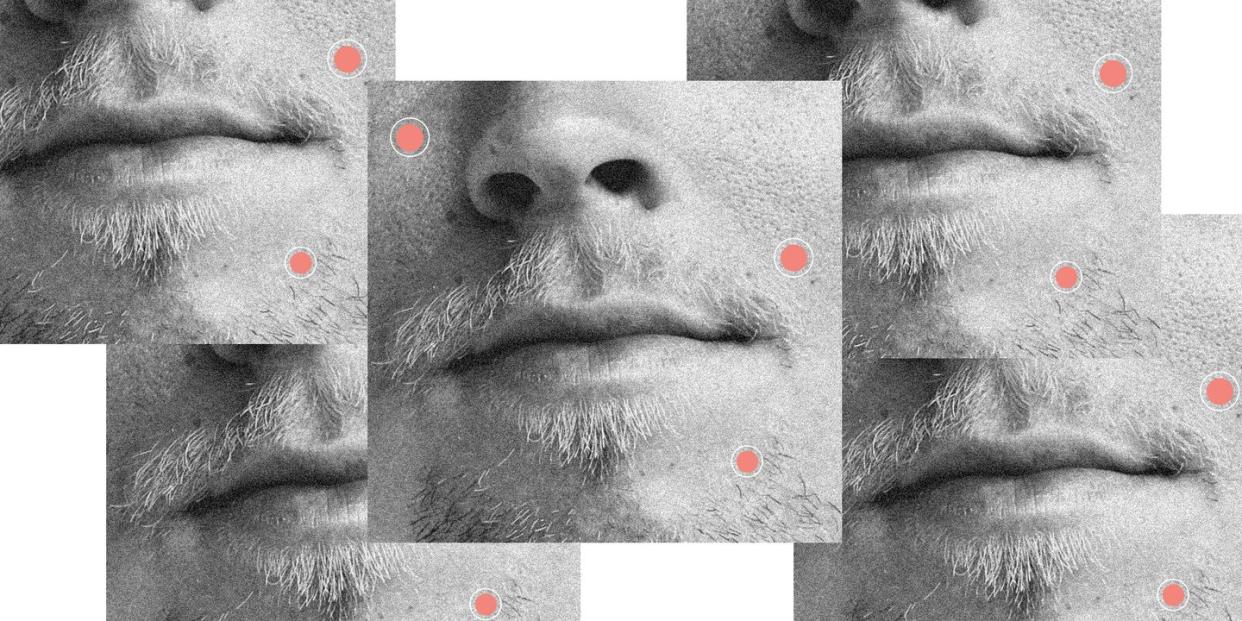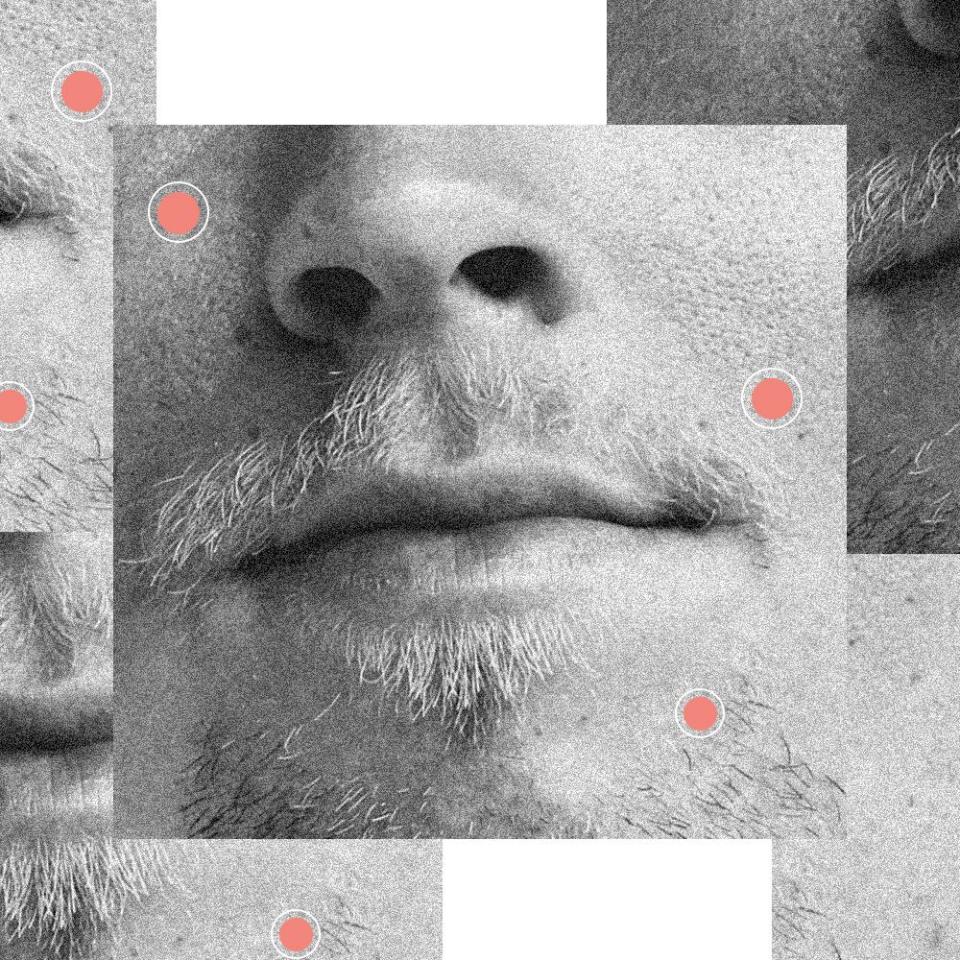If Your Skin Is Freaking Out Right Now, You're Not Alone


I noticed the first zit within two days of working from home. No, scratch that, I felt it. It was one of those deep, throbbing suckers that starts way beneath your skin and you can feel all the way into your bones. What started as a small red dot developed, within a day, into a Vesuvius smack-dab in the middle of my cheek.
In these deeply weird times, all bets are off; even the most well-maintained skin among us could possibly go insane. Case in point: the second giant zit that showed up on my chin and was quickly followed a week later by another and another. My forehead has slowly become peppered with tiny blemishes and even as I write this, I can feel another monster on the corner of my mouth.
The hardest part of dealing with the current state of my face isn’t just getting rid of the zits (I’m old enough by now to have made it through my fair share of breakouts). It’s that these new zits are fucking resilient; the minute I think I’ve made headway with one, another pops up somewhere else. They’re a physical manifestation of my current mood: anxious, frantic, a little bit scared, and a lot stir-crazy.
That, in fact, could be exactly what’s going on, according to dermatologist Morgan Rabach, MD. “Whenever you feel stress, cortisol [the hormone responsible for fight or flight response] levels rise, and it actually increases oil production in our sebaceous glands,” she says. “That can lead to clogged pores and more breakouts” in addition to other issues like rosacea, dryness, and just overall irritation. You don’t even have to feel especially stressed for cortisol to start to impact your skin. Sure, it can happen when we’re, say, weathering a global pandemic, but really any disruption to your routine is enough for your skin to go off the rails. “Your skin is the window to what’s going on inside,” says Dr. Rabach.
There are other things to consider: Whether you’ve started using new skincare products, or stopped using others, could be a factor. Not drinking as much water as usual, changes in your diet (like more, um, constant snacking), and talking on the phone more, because phone screens are dirty AF, could all contribute to changes in your skin.
To really help curb breakouts, Dr. Rabach suggests taking up chill-out activities like meditation and taking an inventory of aspects of your life that have changed recently and how you may be able to get them back on track, like drinking less coffee or more water. Which all sounds great in an ideal world, but I am an impatient bastard and I need results now, dammit.
In that case, she tells me to bust out an exfoliator, like an at-home chemical peel which she is going to do too because, for the record, even dermatologists are not immune to stress-induced skin issues. Peels like Dr. Dennis Gross Skincare Clinical Grade Resurfacing Liquid Peel and Glytone Rejuvenating Mini Peel will help remove built-up dead skin cells from the surface of the skin as well as deep inside pores, so any increase in oil doesn’t cause blockages.
“Stick with something that is designed for at-home use,” she says. And read the label. Some peels are meant to be used more often than others depending on how strong they are.
On the bright side, stay at home orders also provide a unique opportunity to up your skincare game. While you have time to yourself, without the pressure of in-person meetings or going to an office every day, it’s a good time to try something like retinol, which is a tried and true acne-fighting ingredient, but can cause dryness and irritation when you start using it—and especially if you have sensitive skin.
When first using a retinol like Paula’s Choice Clinical 1% Retinol Treatment Cream or Drunk Elephant A-Passioni Retinol Cream, start slow and apply it only once a week for one week, then twice a week for two weeks and so forth till you work up to every night. Retinol helps to speed up cell turnover and can prevent new pimples from forming.
But for pimples that you can already see, please don’t pick them (a golden rule even I, your trusty grooming editor, has broken lately). Instead, use a pimple patch, says Dr. Rabach. “There is a lot of science behind colloidal patches—they pull all the bad gooey stuff out of your skin.” Patches like Hero Cosmetics Mighty Patch or ZitSticka Killa Pimple Patch stick over your pimple and can help get rid of them quicker, plus they don’t allow you to pop or pick.
And while in real life you may only use them at night, now is the perfect opportunity to leave them on 24 hours a day. Take it from me, they don’t show up on Zoom. You could also bust out the old classic spot treatments from your high school days like Neutrogena On-the-Spot Acne Treatment and Clean & Clear Acne Spot Treatment. Their active ingredients like benzoyl peroxide and salicylic acid have been proven to zap zits as well.
Personally, I’ve taken my skincare routine back to basics and am only using gentle products with minimal ingredients in an attempt to calm my skin down and help it refresh itself. A lot of highly potent ingredients is not always the best thing for skin when it’s starting to look angry.
But no matter what you do, make sure to wash your face twice a day, says Dr. Rabach. Switching your cleanser to one that contains salicylic acid, like La Roche-Posay Effaclar Medicated Gel Acne Face Wash, may help curb breakouts.
But if you ask me, the best thing to do about zits right now is give yourself permission to have them. In the grand scheme of things, a few pimples on your face is the least of our collective worries right now; no one is going to fault you if you show up to the virtual staff meeting with an angry zit (and you probably won’t be the only one either). Remember that zits, like most things, are temporary. But just because they’re temporary doesn’t mean you can’t help them along, so pardon me while I go change my pimple patches.
You Might Also Like

